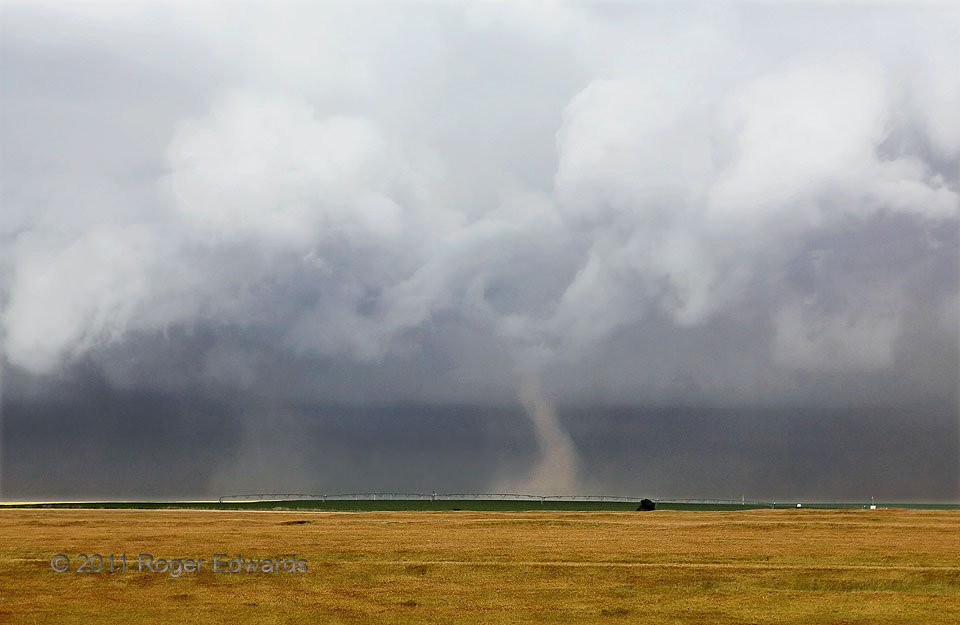This storm, which I intercepted just south of the Kansas/Nebraska line already hours into its morning-to-midday trek across western Kansas, truly was one of the strangest supercells I’ve ever witnessed, as it moved from left to right (SSW-NNE). Not only did it yield a series of big tornadoes in the main mesocyclone region (one of which I sometimes could see as a rain-wrapped wedge), it spun up several more on the forward-flank inflow/core interface roughly in the path of the mesocyclone. The various “forward-flank” tornadoes, including these two, were much smaller and shorter-lived than the mesocyclonic brute roaring up from behind (off-screen left). Each of these interesting little tornadoes (I saw at least five, not counting the huge one in the mesocyclone) formed under relatively small updrafts attached to the main storm. This gave most of them them a “landspout” appearance, despite being supercellular, and sometimes with a narrow condensation funnel above the rotating dust (as with the one at right). The storm, which was collocated with a deep-layer cyclone, zippered up a narrow zone of favorably unstable inflow along an occluded front, a boundary that also appeared to have a lot of cyclonic shear and vorticity as well, based on these results. All the tornadoes I could see ahead of the main mesocyclone were themselves cyclonic. I didn’t post these until 2024 because the contrast was low, but finally figured there’s some value in illustrating a rare process like this. Once this storm died in southern Nebraska, we still (barely!) had time to go east on I-80 and see three more tornadoes from storms on the dryline, well east of the occluded low.
3 S Long Island KS (20 Jun 11) Looking WNW
39.901, -99.5354
